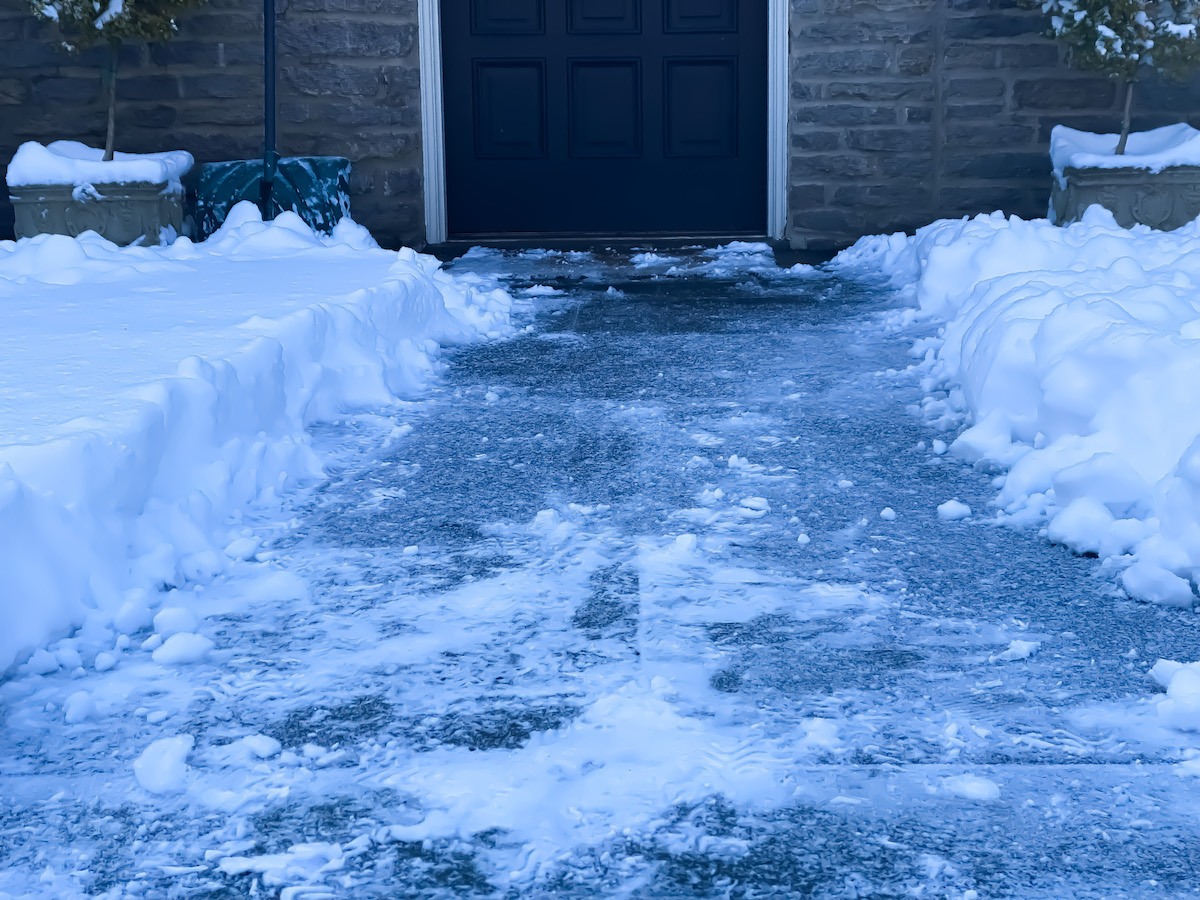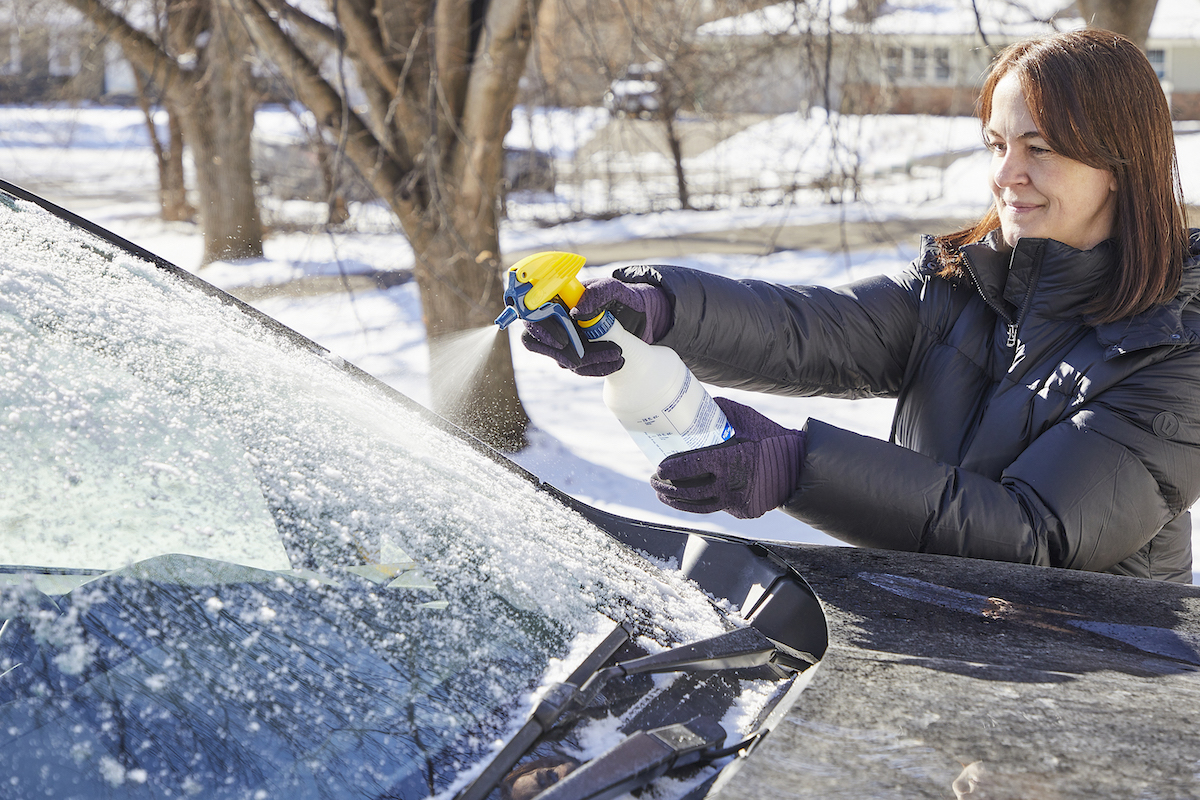

We may earn revenue from the products available on this page and participate in affiliate programs. Learn More ›
A slippery coating of ice can bring your life to a grinding halt if you don’t have the means to get rid of it. While ice melt gets the job done, what if a surprise storm strikes after you’ve used up the last of your supply? Or maybe you’re trying to cut down on commercial ice melt out of concern for plants, pets, and the environment. In either scenario, DIY alternatives can help you clear ice off your car, sidewalks, driveway, and other surfaces. So, the next time you find yourself iced in, try one of these three homemade ice-melting solutions that use ingredients you probably have on hand.
1. For front steps, car windshields and doors, and other small areas, try rubbing alcohol.

Alcohol has a much lower freezing point than water. This homemade de-icer recipe harnesses its ice-melting potential: Combine 4 gallons of hot water, 16 ounces of rubbing alcohol, and 1 teaspoon of dish soap. (The dish soap reduces the surface tension of the water, helping the solution spread more evenly.) Pour the solution over icy areas, and then use a shovel to clear off loose ice and water.
For icy car doors or windshields, pour some of the cooled solution into a spray bottle and spritz the frozen areas. Keep a bottle of this solution in the car so you’re ready if the windshield gets frosted over when you’re far from home.
Pro Tip
No matter which homemade ice melt you choose, it’s a good idea to also lay down a substance that adds friction, at least to surfaces anybody might walk on. Sand, rock salt, and kitty litter all do the trick.
2. For walkways and driveways, try salt.
Rock salt, or sodium chloride, is the most common (and cheapest) ice melt around. It works by lowering the freezing point of water, eventually breaking down the ice. If you don’t have any rock salt handy for de-icing, table salt can do in a pinch. For best results, remove as much snow as possible from the surface before applying the salt. Because of its small granule size, table salt will start working faster than rock salt, but it won’t provide the same traction. As well, table salt tends to turn ice into tough-to-move slush, while rock salt is more likely to break it down into manageable chunks. For small areas, such as the front steps, try mixing warm water with table salt and applying this solution; this method also works for unsticking car tires. Though cheap and usually plentiful, salt has a few drawbacks: It is not effective at the low temperatures that some of the best commercial ice melts can handle. As well, it can harm plants, corrode metal and concrete, and impact fish and wildlife if it gets into waterways, so avoid regular use.
3. If you have nothing else available, try fertilizer.
Ammonium sulfate, a common ingredient in commercial fertilizers, works by lowering the temperature at which ice melts. While it doesn’t melt ice immediately, it speeds the process along. If you have no other potential ice melt around, check your leftover fertilizer to see if ammonium sulfate is listed as a component. To use, scatter it over the ice. Although fertilizer can help melt ice, it’s not recommended. Overuse can harm plants, fertilizer chemicals can damage concrete surfaces, and fertilizer runoff from melting ice is an environmental concern.
